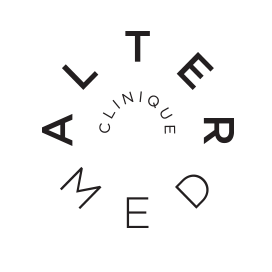Florence Charbonneau-Dufresne
Montreal osteopathy Montreal physiotherapy
Pathophysiology and Anatomy
Patellofemoral syndrome is also described as anterior knee pain. The symptoms are mostly located around or under the patella/knee cap. The patella is the knee cap. It is embedded in the quadriceps tendon and articulates with the femur via the patellofemoral joint. Because it is a floating bone, it requires more dynamic stabilization (use of knee muscles).
xx
The pressure at the patellofemoral joint is increased during weight bearing knee bent: walk, stairs, jumps, squats. Thankfully, this joint has the thickest cartilage of the body: it is designed to accept high pressures.
xx
The patella’s anatomy is also different from one individual to the other. Therefore, its movement in the femoral groove might vary individually and must be assess accordingly. Many muscles attach to the patella including the quadriceps and the iliotibial band. An increased tone in these muscles could pull on the patella and change its biomechanics.
xx
A lack of muscle activity or strength in certain activity could also influence the patella biomechanics. This could also be caused by a lack of dynamic alignment of the whole lower body.
xx
All of these change the patella’s position and might decrease the surface contact, with the same force going through the joint, which leads to an increased pressure at the joint surface.
Symptoms
Most people will present with anterior knee pain, especially when squatting, going down stairs. Pain is intermittent and is increased by certain specific activities or movements.
Differential Diagnostic
There are different conditions that could produce anterior knee pain. Therefore, one must be careful to self-diagnose with patellofemoral syndrome and seek professional help. The fat pad is located anterior to the knee and has been shown to be the most sensitive part of the knee, even in symptoms free individuals. It can become irritated and produce anterior knee pain.
xx
The med plica is a synovial fold medial to the knee cap that could also become irritated.
xx
The treatment plan can be different for everyone and also depending of the main pathology.
Treatment and Education
The primary cause of patellofemoral pain is the lower quadrant dynamic misalignment. This could be modified by exercise program. Having a better leg biomechanics will help unload the patellofemoral joint. This could be achieve through a biomechanics assessment by a physiotherapist and some specific exercises proscription. Usually, the exercises will target the gluteus muscles, as they are the ones responsible for the whole leg rotations.
xx
However, as mentioned earlier, this joint was initially designed to accept high pressure. Therefore, during the rehabilitation, it is important to progressively load this joint. The main goal is to load it enough to create some adaptations at the joint and in the brain while not increasing the pain too much.
xx
Generally, people with patellofemoral pain syndrome will have to stay active and engage in life time changes to keep the leg muscles strong. This could be compared to life changes to manage diabetes or high blood pressure: you have to maintain the changes to still have the results.
xx
To load the patellofemoral joint, you can do some weight bearing knee or seated leg extension. A physiotherapist can help you determine which exercises would be the best to start with according to your symptoms. The most common exercise is squatting.
xx
Monitoring symptoms during exercise is key of the management of this condition. This is true for strengthening exercises as well as for other sports. We recommend keeping the pain level at maximum 4/10 during the activity. It is also important to monitor symptoms after the activity and the next day, as the pain response could be delayed. We recommend to avoid any increase in pain after the activity and the next day.


